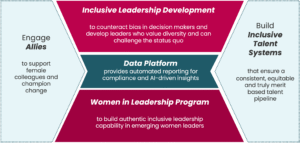
Australia’s journey toward workplace gender equity has reached a pivotal milestone. The Gender Equity Insights 2025 report, released by the Bankwest Curtin Economics Centre (BCEC) in partnership with the Workplace Gender Equality Agency (WGEA), delivers compelling new evidence that gender balance in leadership is a business imperative.
Drawing on a decade of longitudinal data covering over 5 million employees across 5,800 organisations, the report offers what is probably the most robust analysis anywhere in the world of how gender diversity impacts organisational performance. Crucially, it moves beyond correlation to demonstrate causality: increasing gender balance at time t leads to measurable improvements in company value and performance at time t+1, even after controlling for industry, company traits, and economic conditions.
The findings are unequivocal. Companies with gender-balanced executive teams outperform their peers in market valuation, profitability, and resilience – NOT that high performing firms attract more gender balance. When firms move toward balance – whether from male or female – dominated leadership, they see subsequent gains. In fact, mid – sized companies ($1-5 billion market cap) that improved gender balance recorded up to $216 million in added shareholder value.
The report also highlights that the benefits of gender balance are not sector-specific which is good news for those in industries which are highly dominated by a single gender (male or female) – because they have the most to gain. Whether in mining, finance, or education, balanced teams consistently deliver better outcomes. Moreover, companies starting from the lowest levels of gender diversity stand to gain the most from every percentage point of improvement.
Any progress is valuable.
But the report also issues a warning: progress is fragile. Only 27% of organisations meet the 40:40:20 benchmark for workforce gender balance, and just one in four have balanced leadership teams. High resignation rates among women, particularly in health, retail, and agriculture, are eroding hard – won gains. The data show that retention – not just recruitment – is critical. Companies cannot simply hire their way to balance; structural and cultural transformation is essential.
This is where a whole-systems approach becomes vital. Solutions must be designed to address the full spectrum of challenges identified in this report to help organisations move beyond compliance to embed inclusion as a strategic capability that delivers engaged, high performing teams.
This is achieved by setting measurable and achievable targets, tracking progress, and building inclusive cultures that retain diverse talent. At the same time leadership development programs need to prepare women for executive roles, while analytics tools must be deployed to identify capability gaps, attrition hotspots and systemic barriers.
In an era where diversity initiatives face increasing scrutiny, the BCEC report provides a timely and evidence-based rebuttal. Gender balance is not a distraction – it’s a driver of innovation, agility, and competitive advantage.
Contact Symmetra to discuss our whole systems approach to gender balance. We can partner with you to address the full spectrum of challenges identified in this report – positioning your organisation to embed inclusion as a strategic capability.

